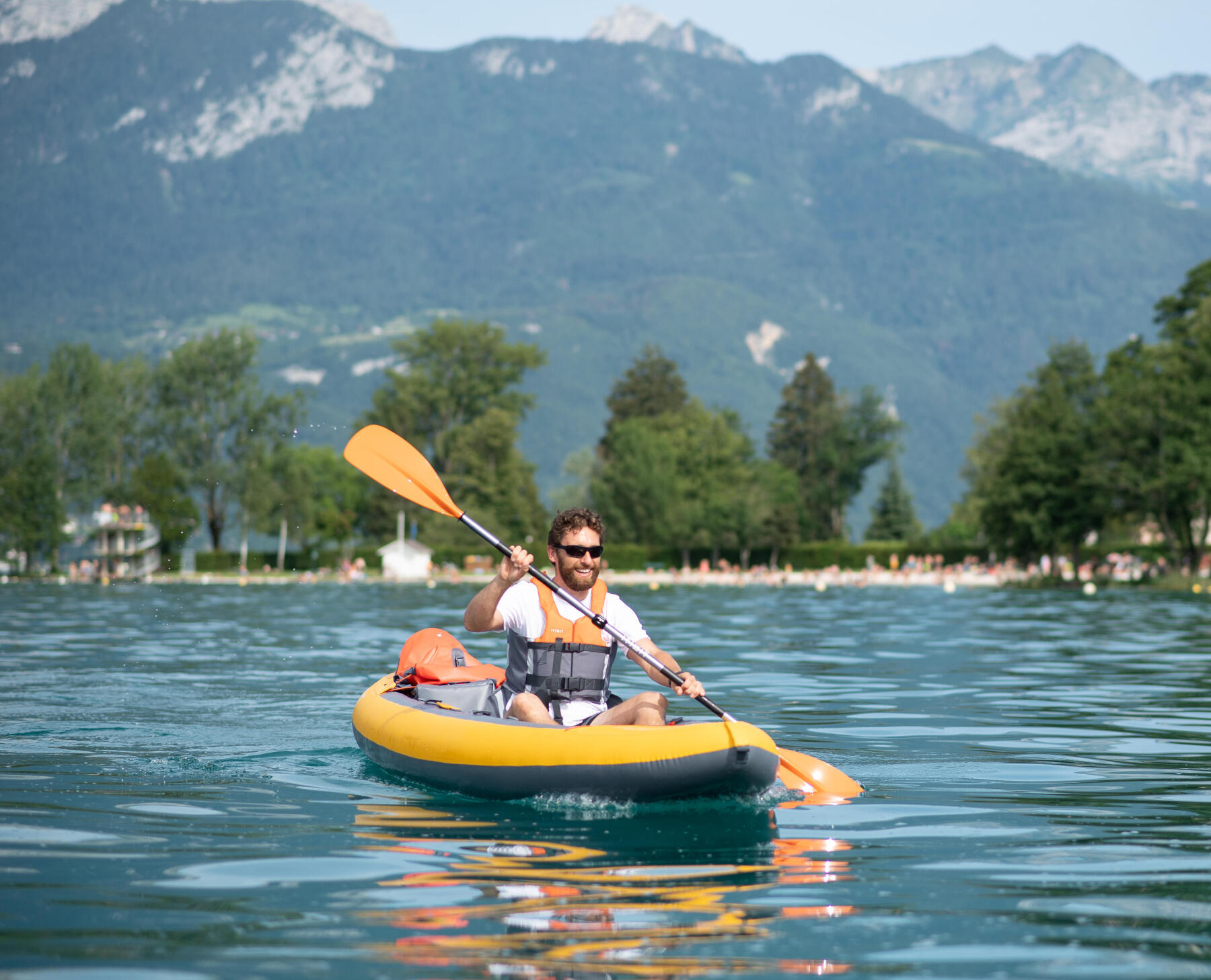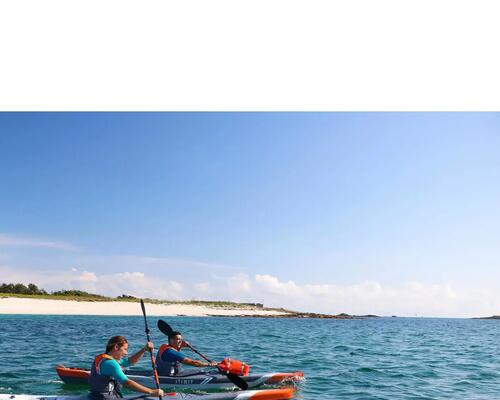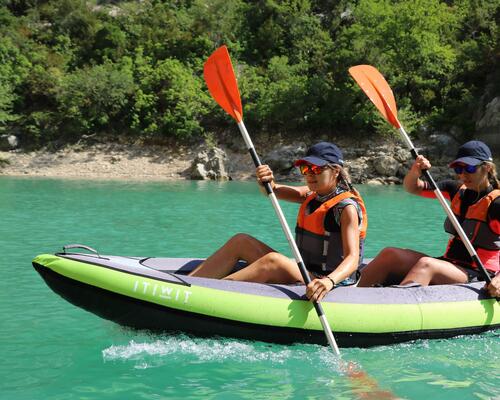#1 Beach craft
Is your inflatable or rigid kayak less than 3.5 meters long? If so, you have what is called a beach craft. You must never go more than 300 meters from shore (from a point on the coast where any craft or vessel and its crew can safely anchor or dock and leave again without assistance).
A buoyancy aid is not mandatory but strongly recommended to make it easier to get back into the boat in the event of a capsize.








